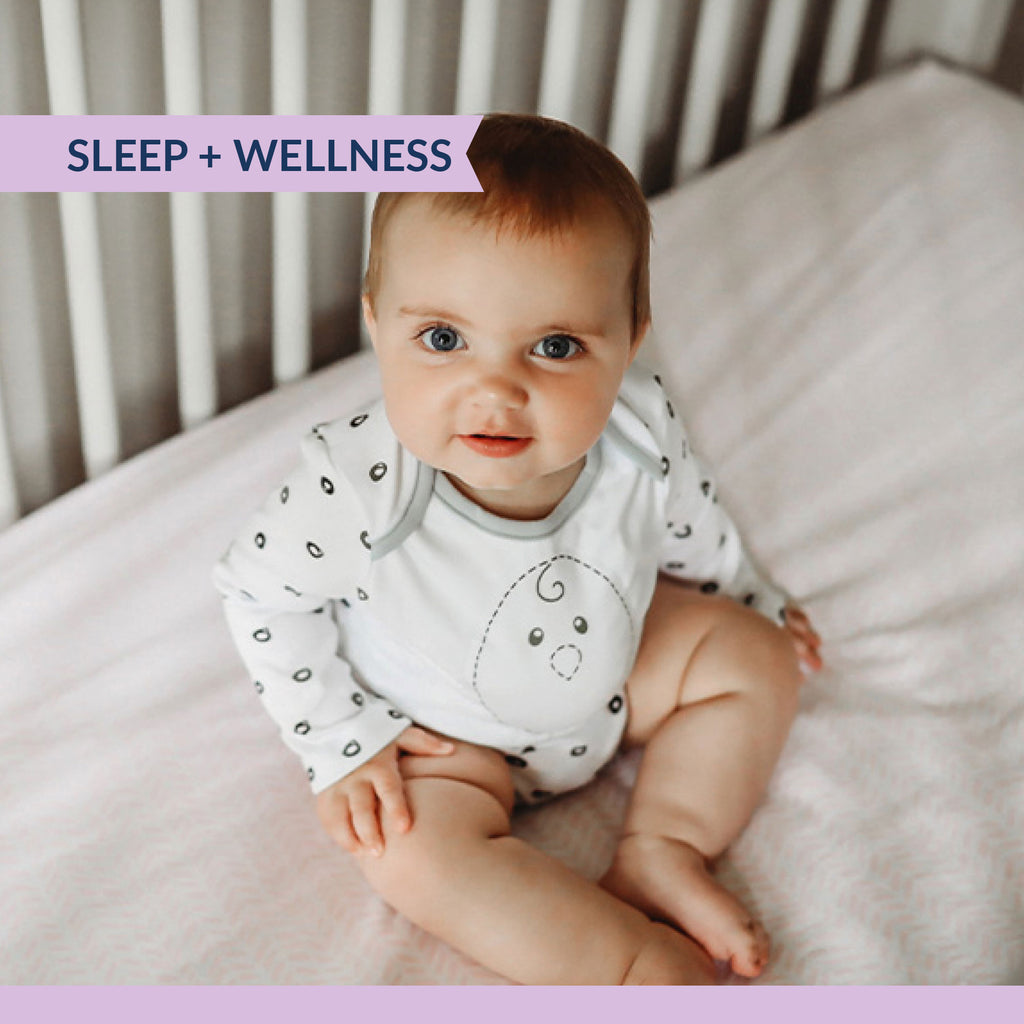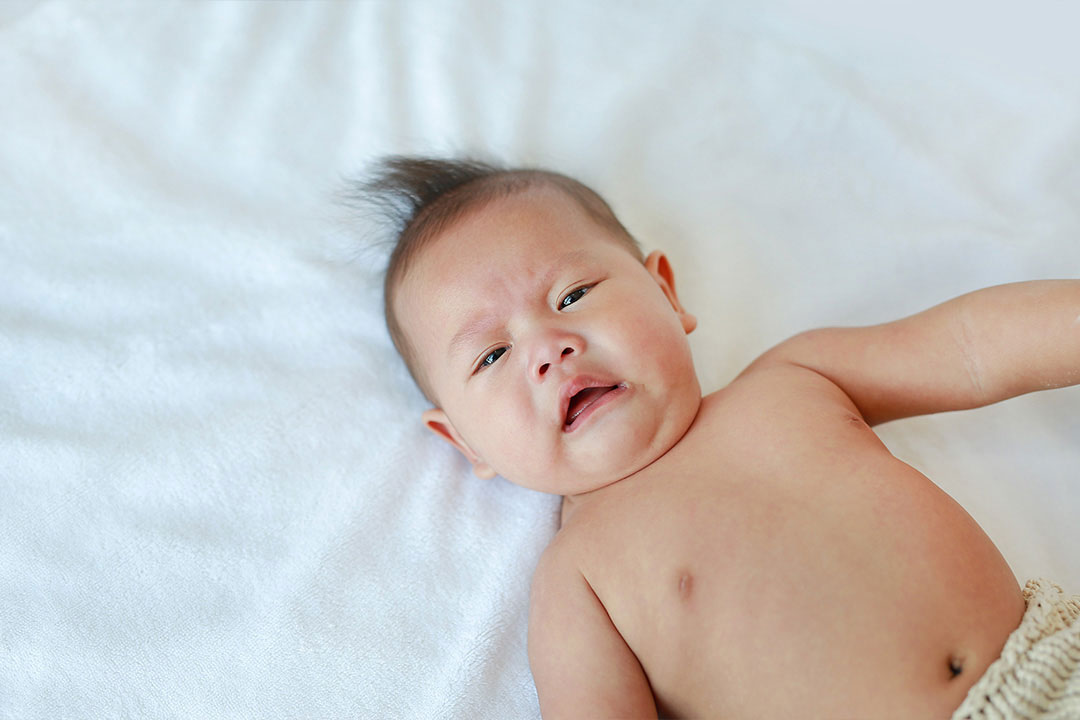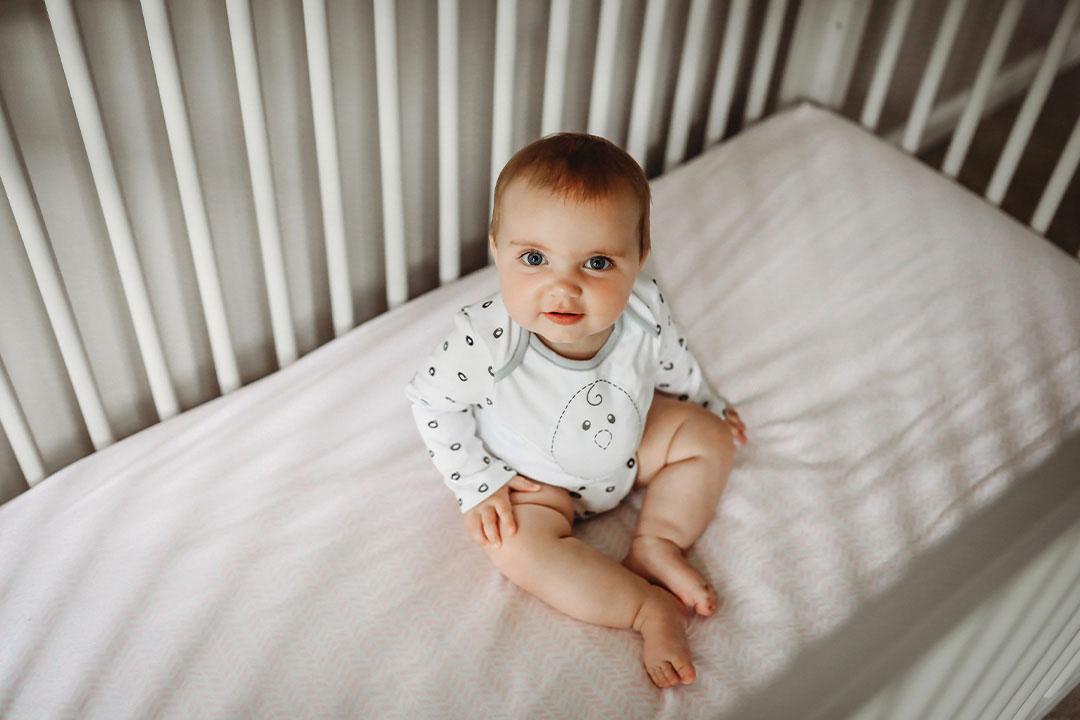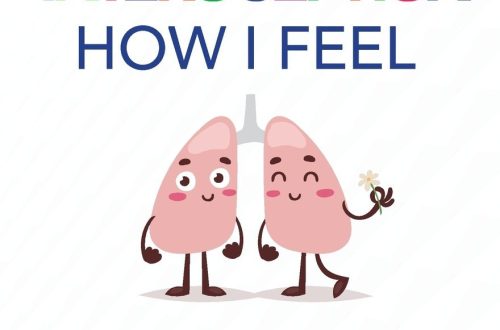
Baby Sleep Medicine, Routines, & More for Newborns– Nested Bean
Understanding the Role of an Infant Sleep Aid in Addressing Sleep Regressions
Baby sleep regressions are stretches where a baby suddenly stops sleeping well seemingly out go nowhere. They can last up to a few weeks, and usually range from three to six weeks.
The most common sleep regression ages are 4 months, 6 months, 8 months, 10 months, and 18 months. However, they aren’t strictly timed to these ages – every baby is unique, and they won’t develop and change at exactly the same rate.
It’s not uncommon for babies to have an off night or two where they have trouble falling asleep, but if it’s going on for a few consecutive weeks and you can’t pinpoint a health issue, there’s likely a regression causing your sleep problems. Again, this is completely normal, and often a sign that your baby is developing.
Their minds are constantly expanding to learn new skills and abilities, and sometimes they want to practice them at night or think about the big world around them!
Luckily, there are plenty of sleep aids for newborns you can use to ease this transitional period and help you and baby both fall asleep and stay asleep. From bedtime routines to gentle infant massage, there are lots of tools at your disposal.
So, learn more about the common baby sleep milestones or signs of sleep regression in our blog if you’d like to learn more. Otherwise, let’s get into the infant sleep aid list you have at your fingertips!
What Can You Use as a Sleep Aid for Infants?
Now, understanding the role an infant sleep aid can play in helping you maintain a consistent newborn bedtime routine and making sleep regressions a problem of the past, it’s time to offer some options. What can you use as a sleep aid for infants?
From baby sleep medicine to consistent routines, sleepwear, massage, and more, we’ll share a list of the best newborn baby sleep aids below.

Consistent bedtime routine
This is by far the most important element of combating a sleep regression. By creating positive sleep associations with certain times, you can help gently reinforce when it’s time to be awake and time to go to bed. If you haven’t started with sleep training yet, this can be a good time to do so.
If your baby suddenly starts crying in the middle of the night, give her a few minutes to fuss before you respond; she may self-soothe back to sleep. If she doesn’t, enter the room to check that everything’s okay, pat her on the head or tummy, quietly say a reassuring word and leave.
Try to avoid rocking, cuddling or feeding your baby, as this may encourage her to regularly wake for your attention. If she keeps crying, you may want to say a few comforting words from the door and leave her again, repeating as necessary at increasing intervals of time.
Whichever technique works best for you – whether that’s the Ferber method or the Pick up/Put down method – just make sure you stick with your newborn sleep schedule! If you’ve already begun to sleep train, baby will likely remember the routines, and changing them up during an already challenging time will just confuse them further.
Learn more about sleep training baby in our blog. But, let’s look at another excellent sleep aid for infants below.
Infant massage
This is a more specific and proactive way to ease a sleep regression – and one that gets you quality time with baby in the process! A baby massage for sleep can be a great method of soothing baby to sleep, particularly if you make it a part of your bedtime routine. Here’s a quick rundown on how to massage your baby:
Dim the lights to create a nice ambiance at massage time
Place your undressed baby down on a safe, flat surface, such as a changing table or bed
Start massaging your baby’s feet with gentle strokes (apply slightly more pressure if massaging a toddler)
Work your way up baby’s legs, along their body, and down baby’s arms – don’t forget their little hands!
Avoid massaging baby’s head, as it still has vulnerable soft spots
Turn over your baby and gently massage their back
Make eye contact with baby during the massage – you could even sing a lullaby to help baby relax even more
You should always stop if they aren’t enjoying the massage, but with any luck, you’ll be able to help baby sleep and have some bonding time too! You could try using some coconut oil to moisturise baby’s skin too.
Gently weighted Zen Sleepwear™
If your baby fighting sleep is a common occurrence or your newborn won’t sleep unless held, it might be down to baby separation anxiety. That’s where our range of gently weighted sleepwear can come in handy!
The lightly weighted pad is designed to mimic your calming touch, helping baby self soothe and go to sleep by themselves. We have the Zen Swaddle™ with removable arm sections for infants. This weighted newborn swaddle is a godsend, helping you reap all the benefits of swaddling in a simplified way.
You can also explore our other types of swaddles, including our zipper swaddle, arms up swaddle, or bamboo swaddle.
Or, you can consider the Zen Sack™ for older babies – which is perfect for when it comes time to stop swaddling baby. This weighted sleep sack is a great alternative to swaddling, as you’ll learn in our guide to the sleep sack benefits.
We have two other styles as well, including a bamboo sleep sack and winter sleep sack. Not sure which type of sleepwear is right for your child? Read our comparison of the swaddle vs sleep sack for clarity.
You can also learn more about what to do if your newborn baby wants hands out of the swaddle, swaddling techniques, why to swaddle baby, when to stop using a sleep sack, the best transition swaddle, and more. Let’s move on to the next sleep aid for infants.
Daytime light exposure
Getting enough light during the daytime is vital for babies and young children – in fact, one study reveals that in young infants, exposure to daylight (not direct sun) in the early afternoon can help develop their circadian rhythm and lead to better sleep.
Avoiding nighttime light
This is the other side of the coin – make sure baby isn’t confused and overstimulated at night by bright lights from bulbs and screens!
It can be a good idea to limit screen time before bed and remove all screens from your baby or toddlers’ room. This means that there are no distractions to keep them from falling asleep.
White noise machines
If you live in an apartment building with noisy neighbors or a big city with a busy night life, you might find that this is worsening your baby’s sleep regression.
In this case, a white noise machine could help drown out the background noise and keep baby from getting overstimulated. Be careful, though – some of these machines are too loud for your baby, so only use ones that are designed with little ones in mind.
Rocking to sleep
This is a practice that is often frowned upon, but when your baby is in the newborn stage, they’re too young to create the associations that lead to sleep problems like separation anxiety. There’s nothing more soothing to a baby than your touch, and on a fussy night, sometimes it’s all that will help – and that’s fine!
Dream feeds (sleep aid for infants)
Dream feeding is the practice of feeding your baby when they’re asleep, or more accurately only barely awake. A well timed dream feed can stop your baby from waking up later on in the night hungry and fussy.
Instead, you’re being proactive, keeping them from getting hungry, and therefore reducing nighttime wake ups, particularly in younger babies who can’t go as long without a feed. Learn more about the ideal dream feed age in our blog.
Soft toy for comfort (sleep aid for kids)
For safety reasons, this only applies to babies over a year old – never put a pillow, blanket, or soft toy in the crib of a baby younger than 12 months. Once they’re past this age, though, a small soft toy can be a useful tool to help soothe a toddler to sleep, particularly if they associate the toy with you (or if it smells like you).
Baby sleep medicine
Unfortunately, if your child has other health issues, you may find that you need to bring in solutions like baby sleep medicine to help them sleep. Of course, you should talk to a pediatrician about the options and only use sleeping medicines for babies on their recommendation.
The most common infant sleeping medicine suggested for babies and toddlers is melatonin, a chemical naturally produced in their brains to help regulate their sleep patterns. Again, this and other sleeping medicines for babies should always be considered after you’ve looked into solutions like sleep routine adjustments and infant massage.
One question we see on the topic of baby sleep aids is in regard to melatonin. While not technically a “baby sleep medicine”, it does follow under the same scope. So, can you use this as an infant sleep aid?
You should only give your baby sleep medicine or supplements for sleep if recommended by your pediatrician. Melatonin is a hormone produced in the brain that helps regulate sleep, and small doses can be given to your baby, but we highly recommend that you always try methods such as improving their sleep routine consistency before you resort to any kind of baby sleep medicine.
Essential Oils
When sleepless nights are testing your patience, essential oils like lavender or chamomile can offer some relief as one of the best baby sleep aids. Many parents swear by a drop of essential oil on the crib sheet or even a dedicated oil diffuser placed in the room.
However, it’s essential to proceed with caution when using this infant sleep aid. Always ensure the essential oils you use are safe for infants, and if you’re using a diffuser, make sure the room is well-ventilated.
Some parents prefer to start by applying the oil to a tissue and placing it near the crib, then monitoring the baby’s reaction before making it a regular part of the routine.
Humidifiers
Dry air can make breathing difficult and disrupt a baby’s sleep, especially during the winter months when indoor heating can make the air in your home particularly arid. That’s where this sleep aid for newborns comes in to save the day.
A humidifier adds moisture back into the air, helping to relieve congestion and potentially helping your baby breathe easier and sleep better. Opt for a “cool mist” humidifier and make sure to clean it regularly to avoid mold build-up.
Room Temperature Control
You might be surprised at how sensitive babies are to room temperature. Too cold, and they might wake up; too warm, and they could get restless. Experts often recommend a room temperature between 68 and 72 degrees Fahrenheit (20 to 22 degrees Celsius) for optimal baby sleep.
Investing in a quality thermostat or even a dedicated room thermometer as an infant sleep aid can help you maintain the ideal sleeping conditions for your infant. Some high-tech baby monitors even come with built-in temperature sensors to alert you if the room becomes too hot or cold.
Pacifiers
Pacifiers can be a bit of a hot topic. On one hand, many parents find them to be invaluable for comforting a fussy baby and helping them fall asleep. On the other hand, some healthcare providers argue they can interfere with breastfeeding and might contribute to dental issues down the line.
If you decide to use a pacifier as a newborn sleep aid, make sure to follow best practices: opt for one-piece models to reduce choking hazards and avoid dipping it in sweet substances to protect your baby’s emerging teeth.
Baby Sleep Apps or Monitors With Tracking Features
You don’t have to go it alone when it comes to figuring out your baby’s sleep patterns thanks to the age of technology. Numerous apps and smart monitors offer sleep tracking features, providing you with data that can help you make informed decisions. As such, these are invaluable baby sleep aids.
Some apps offer tailored sleep training advice based on the data you input, while advanced baby monitors can track room conditions like temperature and humidity in addition to your baby’s sleep patterns.
However, it’s crucial to remember that while technology can be a helpful tool, it shouldn’t replace regular check-ups and consultations with healthcare providers.





